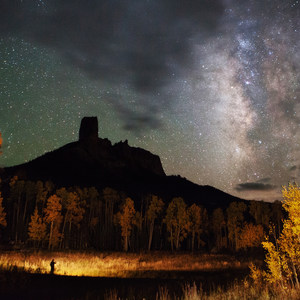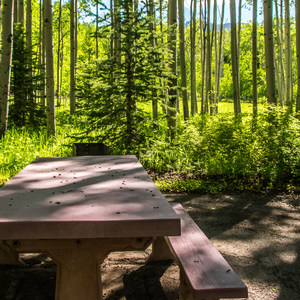Matterhorn Peak is a thirteener located in the San Juan Mountains of Colorado. At 13,596 feet, it is one of the 200 highest mountains in the state. The hike up to the peak is 7.5 miles round trip or 9 miles, depending on where you start. It is a beautiful hike that is usually not crowded, even on summer weekends.
To get there, take Co Rd 20 from Lake City, following Henson Creek West. It is a beautiful canyon, though be careful because there is usually a lot of OHV traffic on summer weekends. Also note that the road is closed from December to May. After turning onto Co Rd 24, the area located at 38.022987, -107.491803 is a good place to park if you do not have a high clearance vehicle. If you do, you can drive up to the two-wheel drive parking area some 0.7 miles north or the four-wheel drive parking area just ahead.
For the first 0.6 miles the trail follows the Matterhorn Creek through the forest, gradually ascending 400 feet in rocky terrain. The creek carries minerals and metals resulting in part from the mining history in the area, so it is not recommended to drink the water, even if filtering it. Follow the trail to the right (east) toward Wetterhorn and Matterhorn peaks. The last trees are at about 1.3 miles from the trailhead, signaling the last spot to camp below the tree line. As the trail is not crowded and skies are remarkably dark, this is a great location to observe and photograph the night sky.
At 1.77 miles from the trailhead, after some 1,160 of elevation gain, the trail splits. Take a right for Matternorn or a left for Wetterhorn. Wetterhorn Peak, being a fourteener, is more popular and also requires a bit more scrambling and exposure. At 2.5 miles from the trailhead and some 1,640 feet of elevation gain, the trail splits again – turn left for the Matterhorn or keep going straight toward Uncompahgre Peak, which is visible to the east. From that point the trail more or less disappears until the last hike before the scramble to the summit. The ascent is considered a Class 3 scramble, not technical climbing per se, but there is height exposure on loose rocks.
As on any other mountain in Colorado, it is recommended to summit early in the day because weather can change rapidly and afternoon lightning storms are very common. The area is used as grazing grounds for large herds of sheep, which are often visible from the mountain and sometimes crowd the trail.
































Comments
Sign In and share them.